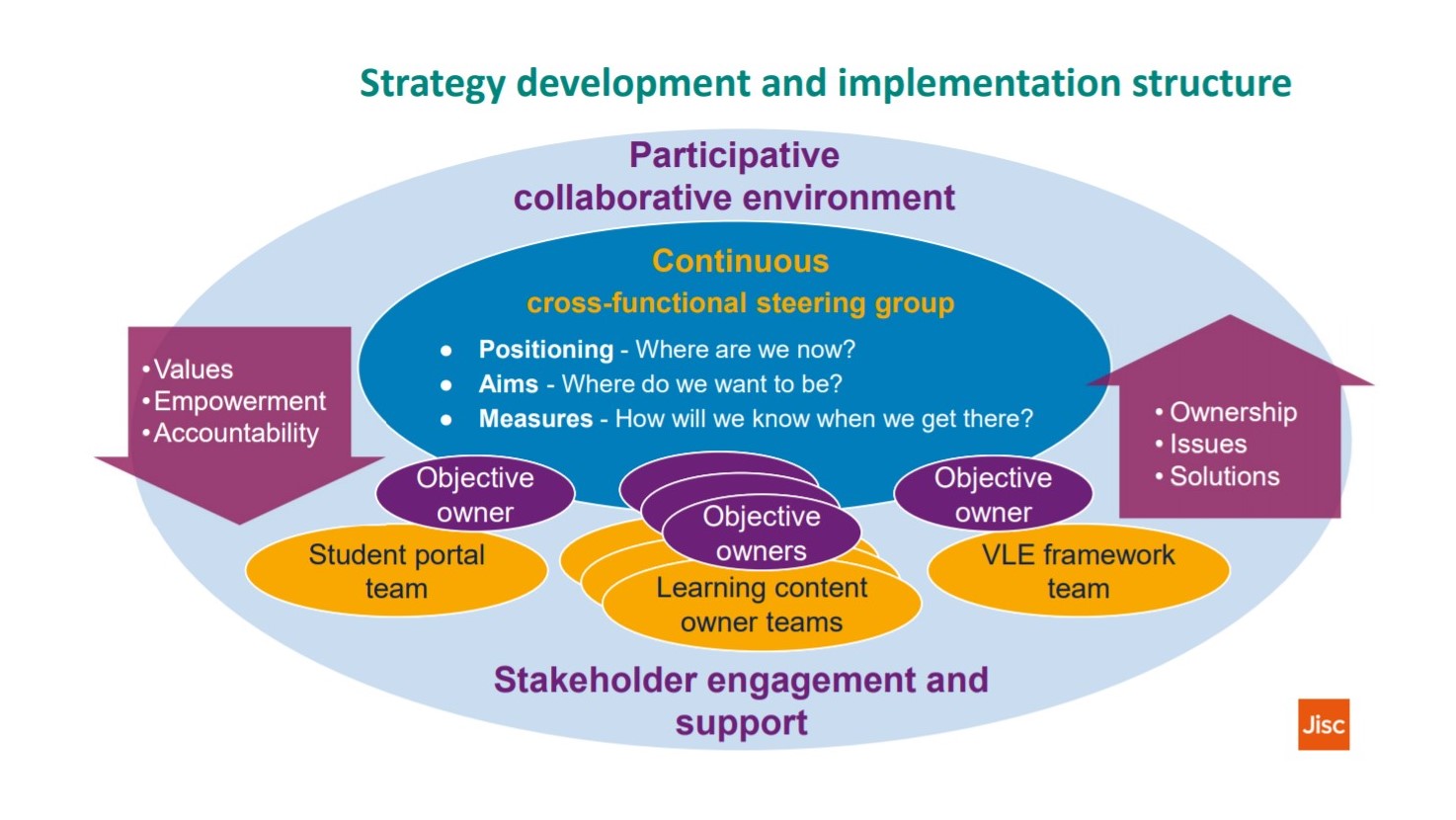With the September deadline approaching for compliance with the Public Sector Web Accessibility Regulations, there’s a flurry of activity as organisations implement auditing and new processes, while putting the finishing touches to accessibility statements and plans.
Doing this in the context of a move to online or hybrid teaching presents a challenge, particularly if staff are unsure of whose responsibility it is to test and plan to fix the relevant aspects of a large digital estate.
It has arguably never been more important for organisations to take a strategic approach to realising a vision for accessibility. Those who have attended, or plan to attend, training courses in the Jisc Implementing Accessibility programme will be familiar with the value we place on securing leadership buy-in.
The importance of management buy-in
Jisc’s subject specialist for organisational strategy, Mark Ayton, has found that gaining management buy-in is essential for successfully implementing any cross-organisational initiative. In the case of accessibility, this approach both demonstrates real value and enables a coordinated approach to addressing the many interrelated issues.
Mark tells us, “Firstly, while there is a need for an accessibility statement, this is just the formal front for a continuous cross-organisational accessibility improvement process. To successfully tackle any cross-organisational issue, four elements must be present:
- Authority – Power to make things happen
- Understanding – Know why things need to happen
- Knowledge – Know what needs to happen
- Experience – Ability to make things happen
These elements form a spectrum from accountability to responsibility:
- Those with the power to make things happen will ultimately be held accountable if the organisation fails to meet its legal obligations or moral duties to its students.
- Those with the ability to make things happen will ultimately be responsible for identifying and implementing improvements.”

Find out more
Mark Ayton and Kellie Mote delivered an online workshop at the recent Kent Accessibility Conference which focused on how to take a strategic approach to accessibility. The workshop recording features the ways in which Jisc is supporting organisations, plus Mark’s essential guide to vision and buy-in. The video features lots of questions from the 300+ attendees. Additional questions were answered in a follow-up document.
Get involved
Jisc’s Implementing Accessibility training programme covered the key processes involved in adopting a strategic approach and gave participants the opportunity to workshop their plans, with a focus on the most pressing issues for each person’s college or university. If you are interested in future runs of this training, please let the training team know.
Whether you are just getting started and need a rapid solution or have been working at your plan for a while, Mark and Kellie, along with other Jisc subject specialists, can support you on the next step of your accessibility journey. You’ll also find lots of valuable support in our lively accessibility community groups.
Image information
An image description was added using WordPress but just in case, or if you’d like to see how we described it, here it is:
Image shows a strategy development and implementation structure. All the processes sit within an environment of participative collaboration and stakeholder engagement and support. At the centre is the continuous cross-functional steering group, which asks: Where are we now? Where do we want to be? How will we know when we get there? Emerging from this group are owners of specific objectives who appoint their implementation teams. Top-down values, empowerment and accountability are provided by the steering group and objective owners. Bottom-up issues, solutions and process ownership are provided by the implementation team members.
